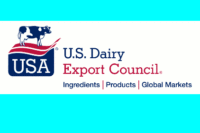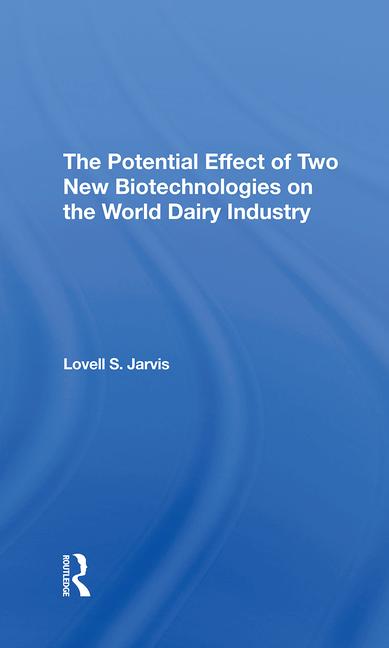World dairy roundup
Too much milk drives down world dairy prices; an Australian dairy uses IML on cheese packages; dairy highlights from Expo Pack Mexico, Anuga, Fispal, IFT
Good weather and the lifting of quotas in the EU have pushed milk supply despite low prices.

Nutrilac whey protein from Arla Food Ingredients

See organic dairy products at Anuga, Oct. 10 to 14 in in Cologne, Germany.

Tetra Pak's new filling machine uses electron beams instead of hydrogen peroxide to sterilize packaging material.

Dairy experts met at the IFCN Dairy Conference in Kiel, Germany.

Pure Dairy is using a new IML label for the feta cheese sold in Coles supermarkets in Australia.





With world milk prices below 30 cents/kg, the dairy industry faces its 3rd ‘crisis’ in 8 years
During the three day IFCN Dairy Conference in Kiel, Germany, milk experts from 45 countries gathered to discuss the global status and perspectives of milk production and milk prices. The hot topic was the record-low milk price.
Torsten Hemme, CEO of IFCN http://www.ifcnnetwork.org/en/start/index.php and host of the conference, stated in his welcome speech: “The world milk price fell below 0.30 USD (i.e. 0.26 EUR)/ per kg of milk (June 2015). This means, we are facing the 3rd crisis within only 8 years. This affects the milk production in every country in the world.”
Key reason for this severe decline of milk prices is the imbalance of world milk supply and demand in 2014. Right now, good weather conditions and also the fact of EU quota removal have pushed milk supply despite low prices. The import ban in Russia and China and market psychology factors play a significant role as well.
World milk supply is outstripping demand, according to Rabobank report
The world is still producing more milk than the market currently needs. This imbalance is unlikely to be substantially corrected in the second half of this year, according to the Rabobank Dairy Quarterly.
"The seeds of an eventual price recovery are now being planted, with producers and consumers finally getting the signal that the world has too much milk and starting to respond to that. But the price recovery itself is unlikely to emerge till late 2015 at best, ensuring a difficult period for many of the world's producers," says Tim Hunt, Rabobank global strategist Dairy. Key highlights:
- The sharp rally in international dairy prices in Q1 was reversed in Q2, with prices falling 20%-30% in the 3 months to mid-June.
- While market fundamentals never appeared to support the Q1 rally, fundamentals also deteriorated through Q2.
- After falling marginally in Q1, production in key export regions again rose above prior years in April as weather improved and EU quotas were removed, enabling producers to respond to what remained profitable prices in many regions.
- In the face of ongoing weakness in China and Russia, other buyers stepped in to take most of this product, though buy-side stocks are now large and supply-side stocks are also showing signs of growing.
- Rabobank expects that the deterioration of market fundamentals will push back the recovery phase for international prices by at least a quarter (compared to our expectations in March).
- US dollar prices will likely remain depressed in international trade through most of 2H 2015, as supply growth continues to outstrip demand as China continues to rebalance and buyers end their stock build programs.
- Prices are expected to enter a recovery phase in late 2015/early 2016, after a period of slow production growth coincides with the stabilization of Chinese imports and improved consumer demand created by a period of lower retail pricing and ongoing income growth.
- The rate of price recovery will initially be dampened by the need to work through excess stock, before it gains greater momentum in Q2 2016.
U.S. cheesemakers export to Asia, Middle East
Cooperatives Working Together (CWT) has accepted 20 requests for export assistance from Dairy Farmers of America, Foremost Farms, Northwest Dairy Association (Darigold), and Tillamook County Creamery Association who have contracts to sell 3.261 million pounds (1,479 metric tons) of Cheddar, Gouda and Monterey Jack cheese and 1.157 million pounds (525 metric tons) of butter to customers in Asia and the Middle East. The product has been contracted for delivery in the period from June through November 2015.
Pure Dairy uses in-mold labeling packages for cheeses sold in Coles supermarkets
Pure Dairy is using a new label for the feta cheese sold in Coles supermarkets in Australia. Pure Dairy and Coles worked for 18 months on the production and packaging of a feta cheese that is matured in wooden vats for three months.
John Hicks, CEO of Pure Dairy, said in a statement: “We chose Paragogiki Thrakis as our exclusive Greek manufacturer, because they combine a modern and high-quality production process with traditional know-how and experience in the Greek cheese-making sector. That is why their traditional feta perfectly fulfils the high quality requirements of Coles.”
The cheese packaging uses new lacquer options from Verstraete IML, Matt IML and UltraGloss IML. IML labels offer high-quality, sustainable printing quality and the detailed finished touches, Hicks said.
See organic dairy foods at the Anuga show, Oct. 10 to 14 in Cologne
Organic dairy foods and other organic products will be on exhibits at the Anuga show in Cologne, Germany, running from Oct. 10 to 14. More than 250 organic suppliers will be exhibiting in Hall 5.1. Around 1,700 other companies will be spread throughout the entire Anuga show. A series of lectures will be given every day; the aim is to promote and enhance the knowledge on and about organic products and their marketing. More information is at the Anuga website.
At IFT, Arla will show how to use acid whey from Greek yogurt to make high-protein/low-fat dips
Arla Foods Ingredients, a unit of the European dairy cooperative Arla, has developed a protein solution that enables manufacturers to make high-protein low-fat dips using the acid whey they have left over after making Greek yogurt. By adding the dairy cooperative’s Nutrilac whey protein to a mixture of acid whey, water and cream, dairy companies can create a high quality dip that is typically only 6% fat and contains 4% protein. Arla Foods Ingredients is showing the concept at the IFT Food Expo, Chicago, from July 12 to 14.
A sold-out Expo Pack Mexico set records this year
Expo Pack México, which closed June 19, was the largest and most international edition in its history, according to show owner & producer PMMI. Over 25,000 visitors attended the third consecutive sold-out show at Centro Banamex, Mexico City, visiting more than 1,000 exhibitor companies occupying more than 19,000 net square meters (204,500 square feet) of exhibit space. Over the show’s four days, buyers in food and beverage, pharmaceutical, personal care, chemical, electronics, textiles, and automotive sectors, among others, discovered solutions to their processing and packaging challenges.
Mexican and Latin American attendees, including buying groups from Guatemala, Costa Rica and Colombia, took advantage of the diversity of the global pavilions. The PMMI pavilion alone covered over 2,130 net square meters (~22,900 square feet) and included 86 member companies from the U.S., Canada and Mexico. Additional international pavilions housed representatives from Argentina, Brazil, Colombia, China, Spain, France, Guatemala, India and Italy. Expo PackMéxico 2015 also saw the Mexico City debut of the Innovation Stage.
Tetra Pak took the covers off a new high-tech filling machine at the Fispal show in Sao Paulo
Tetra Pak exhibited a new filling machine that uses electron beams, not hydrogen peroxide, to sterilize packaging material.
The Tetra Pak E3, shown at the Fispal Technologia International Trade Show in São Paulo, Brazil, is said to be able to run up to 40,000 portion packages per hour. Compared to the company’s existing A3/Speed platform, the new machines will provide lower operational costs, improve environmental performance and increase production flexibility. The sterilization technology works by focusing a controlled beam of electrons onto the surface of packaging material as it runs through the filling machine, killing any bacteria or micro-organisms present.
Looking for a reprint of this article?
From high-res PDFs to custom plaques, order your copy today!












